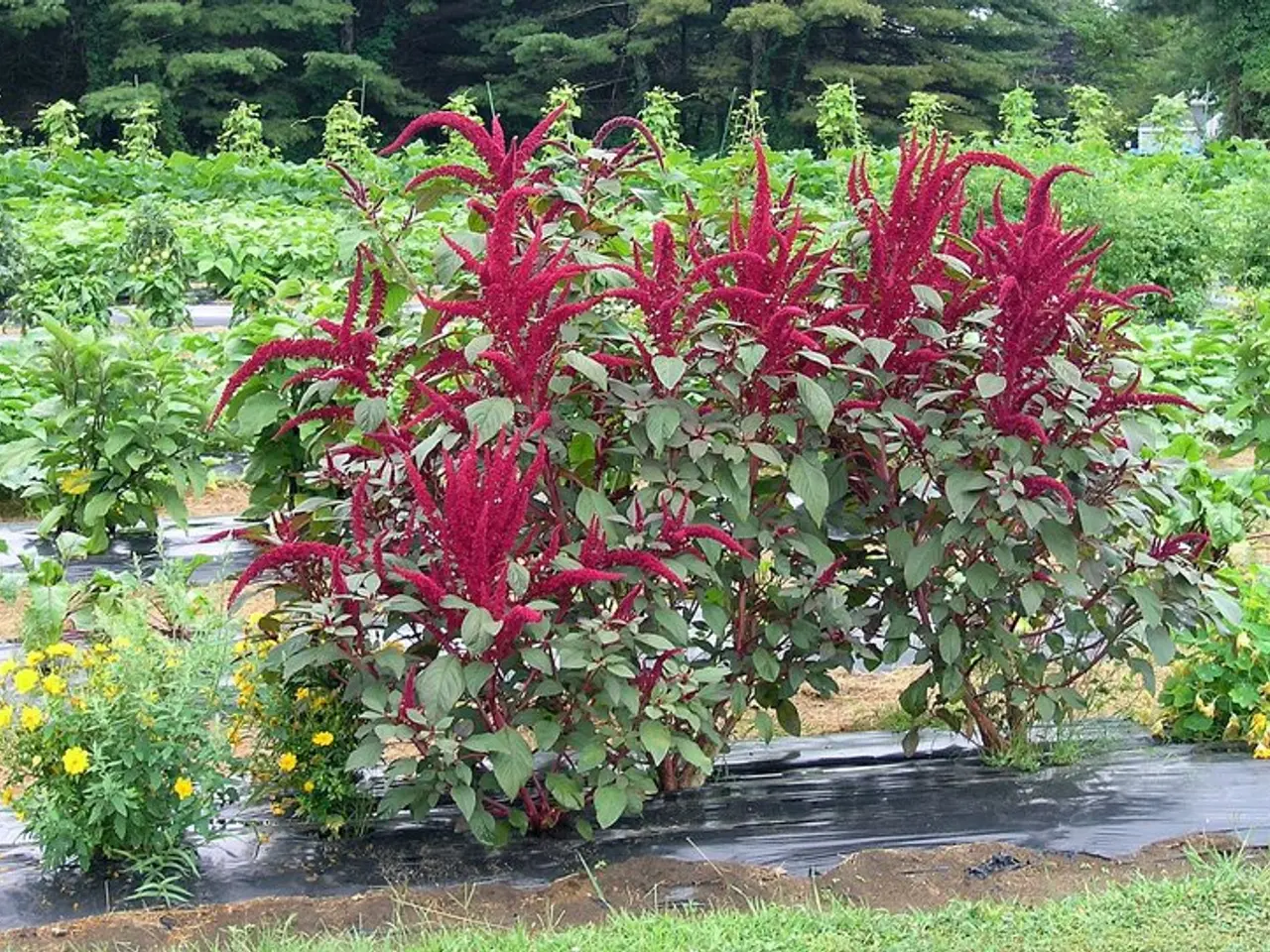Avoiding Common Mulch Blunders for Stronger Vegetation
================================================================
Mulch, a layer of material added to the surface of soil in gardens, offers numerous benefits such as water retention, nutrient preservation, soil erosion reduction, weed suppression, and protection from extreme temperatures. However, to reap these benefits, it's essential to understand the best practices for using mulch effectively.
Firstly, it's crucial to maintain a clean garden before mulching. Weeds should be pulled out before applying mulch, as this ensures that the mulch works effectively at keeping weeds at bay. If weeds have already grown through the mulch, they must be dug out by the roots to prevent them from competing with plants for water and nutrients.
There are various types of mulch available, each with its unique advantages. Bark and wood chip mulch are suitable for flower beds and around trees, providing a natural, attractive appearance. Grass clippings, leaves, and hay are best for vegetable beds, offering a nutrient-rich environment for growing plants. Unusual mulch materials like seaweed and sheep's wool can transform a garden, adding a unique touch while providing the same benefits as traditional mulches.
When raking old mulch, it's important to fluff up the soil to reduce compaction. Leaving the old mulch in place and piling more on top contributes to soil compaction, which suffocates plant roots and reduces water absorption. Instead, when replacing mulch, don't simply lay it over old mulch - take the time to rake the old material. Excess mulch can be fixed by raking off enough to leave two to three inches in place. Reusing old mulch requires mixing it with new material to maintain its effectiveness.
It's also essential to consider the amount of mulch used. Using too little mulch defeats its purpose, as it doesn't provide the benefits of water retention, weed suppression, or plant protection. On the other hand, using too much mulch can cause problems, including trapping excess water at plant roots and compacting the soil, reducing oxygen and water flow. Aim for two to three inches of mulch when applying.
When mulching around trees or shrubs, keep the layer two to three inches thick and consider leaving a thin ring around the trunk mulch-free to prevent moisture from accumulating and causing rot. Avoid colored mulches made with wood or bark treated with chemicals and dyes, as they may harm your plants.
Finally, timing is crucial when it comes to mulching. Mulching too early in spring keeps the soil cold, making it difficult for seedlings to grow and emerge. It's best to wait until the soil has warmed up before applying mulch.
While the name of the professional who managed gardening and home production for several years is not provided, following these tips can help you create a beautiful, healthy garden using mulch effectively.







